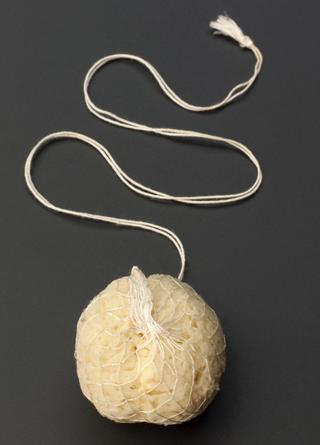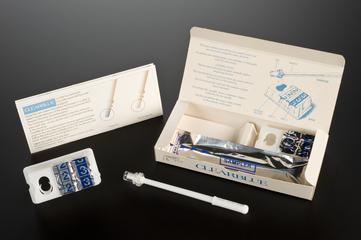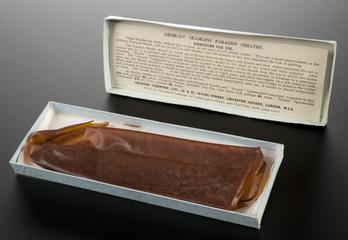
Obstetrical fillet, 1701-1800
- Made:
- 1701-1800 in unknown place




Fillet, probably 18th century
Obstetrics is the branch of medicine dealing with childbirth. A fillet is an obstetric tool. It aids the passage of a child down the birth canal. It is a flexible appliance that could be looped around the baby, usually at the head. The physician then gently pulled it to assist the delivery.
This example is made of three thin metal strips which join at the tip. These were folded together for easy insertion. They then unfolded internally to ‘scoop’ around the baby’s head. Fillets were often made of leather or whalebone. Both materials were flexible and strong.
Details
- Category:
- Obstetrics, Gynaecology & Contraception
- Collection:
- Sir Henry Wellcome's Museum Collection
- Object Number:
- A615455
- Measurements:
-
overall: 475 mm x 90 mm, .43 mm,
- type:
- obstetrical fillet




